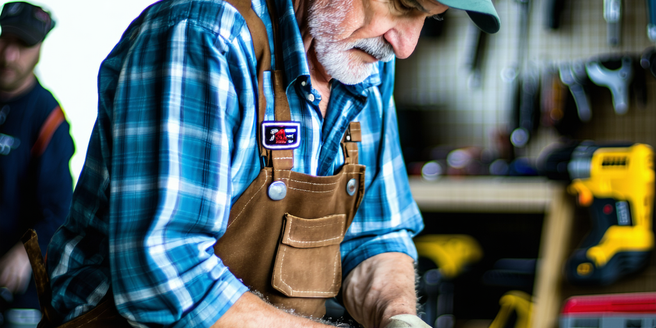Finding Free Home Repair Providers

Understanding Home Repair Needs
| Common Damage | Contributing Factors | Typical Repairs |
| Roof Leaks | Weather, Age | Shingle Replacement |
| Plumbing Issues | Rust, Aging Pipes | Pipe Replacement |
| Electrical Faults | Faulty Wiring | Rewiring |
| Structural Cracks | Foundation Issues | Foundation Repair |
| Mold Growth | Moisture | Mold Remediation |
| Heating Problems | System Wear | System Check |
Eligibility for Free Services
When seeking free home repair services, understanding eligibility is crucial. Typically, programs prioritize low-income households, elderly residents, or individuals with disabilities. Some initiatives focus on veterans or single parents, offering them targeted assistance. In many communities, these programs are funded by local government grants or nonprofit organizations. It’s important to research local programs to find those that best match your needs. Verifying income levels and household demographics can streamline the application process. Many service providers request documentation to affirm eligibility, such as tax returns or proof of government aid, to ensure help reaches those most in need. Awareness of eligibility criteria can significantly increase the chances of securing assistance, making repairs more accessible without financial burden.
Government Programs Available
Free home repair assistance programs offered by the government are a valuable resource for many homeowners. Understanding the eligibility requirements is crucial to take full advantage of these opportunities. The U.S. Department of Housing and Urban Development (HUD) offers grants and loans for critical repairs through the Community Development Block Grant Program. These programs often prioritize helping those in underserved communities. The Department of Agriculture also runs the Rural Development Program, assisting low-income homeowners in rural areas to improve and repair their homes. Additionally, the Weatherization Assistance Program aims to increase energy efficiency in homes, ultimately reducing utility costs. Familiarizing yourself with these government offerings can open avenues to essential home repair aid.
Non-Profit Support Networks
Non-profit organizations play a pivotal role in facilitating free home repairs for those in need. Programs like Habitat for Humanity’s Critical Home Repair initiative focus on essential repairs to improve safety, health, and quality of life. These efforts not only address immediate repair needs but also contribute to the long-term sustainability of communities. Additionally, these programs often collaborate with local communities to identify those most in need of assistance. Rebuilding Together is another non-profit that mobilizes volunteers to assist low-income homeowners with essential repair tasks. These organizations typically operate on donations, grants, and volunteer labor, allowing them to provide free services to qualified individuals. Engaging with local non-profits can connect homeowners with resources necessary for maintaining safe and livable environments.
Community Repair Initiatives
Community-based repair initiatives harness local skills and resources to support homeowners in need of repairs. Neighbors or community leaders often spearhead these initiatives to address local housing concerns, mobilizing volunteers and pooling materials to conduct repair projects. These projects not only help individuals with immediate needs but also strengthen the overall fabric of the community. These initiatives create a supportive network, encouraging residents to contribute their skills or resources for the benefit of others. In many cases, these efforts also provide valuable training and skill development for volunteers. Through collective effort, communities can efficiently tackle repair needs, creating safer, more resilient neighborhoods while fostering a strong sense of communal cooperation and support.
Online Platforms for Resources
Leveraging online platforms is an effective way to locate home repair resources. Websites and forums dedicated to home improvement often feature communities willing to share advice or offer hands-on help. Many of these platforms foster a sense of community, encouraging users to exchange tips and experiences. Platforms like Nextdoor or Facebook groups may advertise local free or discounted repair services. It’s also beneficial to engage with these communities by actively participating in discussions or asking questions. Additionally, websites focusing on DIY techniques provide homeowners with guidance on addressing minor repairs personally. Utilizing these digital resources can empower homeowners to tackle repair challenges independently or connect them with nearby assistance, broadening access to necessary support without significant financial investment.
Application Process for Assistance
The application process for home repair assistance typically involves several key steps. Initially, homeowners must research available programs, ensuring they meet eligibility requirements. Collecting required documentation, like proof of income or property ownership, is essential for substantiating claims. It’s crucial to keep all records organized and accessible throughout the process. Many applicants overlook the importance of understanding the specific criteria of each program, which can lead to unnecessary delays. Upon gathering this information, applicants must complete and submit forms accurately and promptly. Follow-up communication with support agencies can clarify any questions and ensure progression through the application process. Proper preparation and inquiry can enhance the chances of receiving aid, facilitating timely and effective repair solutions.
Maximizing Repair Support
To make the most of available repair assistance, it’s vital to adopt several strategic approaches. Prioritizing repairs based on urgency and safety can ensure essential issues are addressed first. Investigating multiple assistance programs can expand available resources. Additionally, researching government incentives can reveal unexpected financial help. Collaborating with community organizations or attending local events may unlock additional support networks. Networking with other homeowners can also provide valuable insights and tips. It’s important to remain informed about any new regulations or opportunities that may arise. Staying organized and maintaining thorough records of communication and documentation can streamline interactions with service providers. By employing a proactive, comprehensive approach, homeowners can effectively leverage repair support, achieving necessary improvements while easing financial strain.
Successful Home Repair Cases
Success stories of individuals who have benefited from free home repair services offer inspiration and hope. In one case, a senior citizen secured critical repairs through a government grant, improving her home’s accessibility. Another family, facing mold issues, received volunteer assistance from a local non-profit, restoring their home’s safety and health condition. These initiatives not only repair homes but also rebuild lives. Many communities actively support these programs to ensure that those in need have access to necessary resources. Veterans have also found relief through specialized programs offering improvement aid. These stories illustrate the tangible impact of repair assistance, demonstrating how strategic resources and community support can transform living conditions and lives at no cost to the homeowners.
Proactive Repair Prevention
Preventive measures can significantly reduce the need for extensive home repairs. Regular maintenance, such as cleaning gutters and inspecting roofs, can prevent minor issues from escalating. Implementing these practices can save homeowners both time and money in the long run. Promptly addressing leaks or insulation concerns can avoid extensive damage. Homeowners can also set aside time for seasonal checks, ensuring heating and cooling systems are in optimal condition. Scheduling annual inspections with a professional can further identify potential issues before they become major problems. Additionally, long-term planning and budgeting for potential repairs can buffer against unexpected expenses. These proactive approaches not only preserve home quality but also align with financial prudence, reducing potential repair costs over time.
